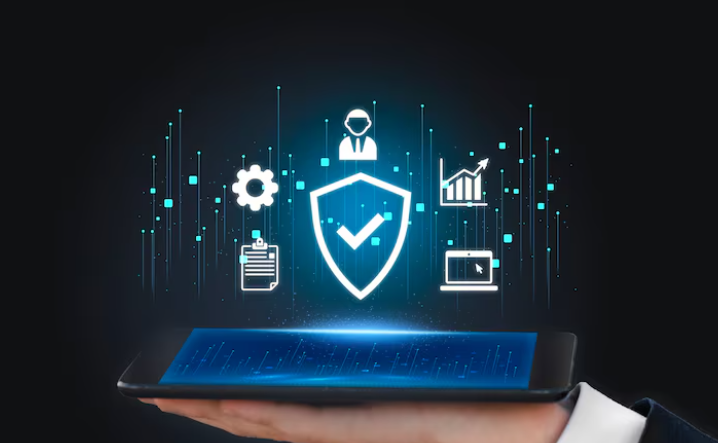Introduction
In today’s fast-paced digital economy, enterprises face increasing pressure to deliver solutions that can scale efficiently while maintaining the highest levels of security. Whether it’s an internal system for employees, a customer-facing web application, or a complex enterprise platform, the stakes are higher than ever. Downtime, data breaches, or performance bottlenecks can cost millions and tarnish a company’s reputation.
This is why scalability and security are the two cornerstones of building enterprise-grade solutions in 2025 and beyond. This blog explores why these factors are non-negotiable, how enterprises can implement them effectively, and what the future holds for secure and scalable enterprise development.
What Are Enterprise-Grade Solutions?
Enterprise-grade solutions are robust, secure, and scalable applications designed to handle complex business processes and large user bases. Unlike small-scale apps, these solutions must:
- Support thousands or millions of concurrent users.
- Ensure data protection against cyber threats.
- Adapt to rapid changes in demand and technology.
- Integrate seamlessly with existing enterprise systems.
Why Scalability Matters in enterprise-grade Solutions

1. Handling Business Growth
As enterprises expand, so do their digital requirements. A scalable solution ensures that the system can handle increased users, data, and transactions without affecting performance.
Example: E-commerce giants like Amazon rely on highly scalable systems to handle peak shopping seasons like Black Friday.
2. Cost Efficiency
Scalable architectures allow businesses to pay for resources only when needed. This eliminates the need for over-provisioning infrastructure.
Cloud-native enterprise-grade solutions make scaling seamless—resources can be added or reduced automatically.
3. Competitive Advantage
In today’s markets, agility is key. Scalable systems enable enterprise-grade to launch new features faster, test innovations, and adapt to changing market demands.
4. Improved User Experience
Slow load times and system crashes drive users away. Scalability ensures that performance remains consistent, even during high traffic spikes.
Why Security Is Non-Negotiable
1. Protecting Sensitive Data
enterprise-grade handle massive volumes of sensitive data—financial records, customer details, intellectual property. A single breach can result in legal penalties and loss of trust.
2. Compliance Requirements
Regulations such as GDPR, HIPAA, and SOC 2 mandate strict data protection practices. Enterprise-grade solutions must be built with compliance at the core.
3. Cybersecurity Threats Are Growing
In 2025, cyberattacks are more sophisticated, automated, and AI-driven. Hackers target enterprise-grade systems because of the scale of potential rewards.
4. Business Continuity
Security isn’t just about keeping hackers out—it’s also about ensuring disaster recovery, backups, and resilience. A secure enterprise solution keeps the business running, even during attacks or outages.
Best Practices for Scalability in Enterprise Development
- Adopt Cloud-Native Architectures
- Use containerization (Docker, Kubernetes) for flexibility.
- Embrace serverless computing for demand-based scaling.
- Microservices Architecture
- Break systems into smaller services for independent scaling.
- Reduces bottlenecks and simplifies updates.
- Load Balancing and Caching
- Distribute traffic across servers.
- Use caching mechanisms (Redis, Memcached) for faster responses.
- Performance Monitoring
- Implement tools like New Relic, Datadog, or Prometheus.
- Proactively detect and fix performance issues.
Best Practices for Security in Enterprise Development
- Zero Trust Architecture
- Never trust, always verify—regardless of network location.
- Apply least privilege access to reduce risks.
- Data Encryption
- Encrypt data both in transit and at rest.
- Use enterprise-grade key management systems.
- Regular Security Audits & Penetration Testing
- Identify vulnerabilities before attackers exploit them.
- Multi-Factor Authentication (MFA)
- Adds an extra layer of security beyond passwords.
- AI-Powered Threat Detection
- Use machine learning to detect anomalies and prevent attacks.
Scalability and Security: Working Together
Many enterprises treat scalability and security as separate priorities, but the two are deeply interconnected.
- A highly scalable system without security becomes a hacker’s playground.
- A highly secure system without scalability frustrates users and stunts growth.
The best enterprise-grade solutions balance both—adapting to growth while keeping data and processes secure.
Real-World Examples
- Netflix: Built on AWS, Netflix leverages auto-scaling and redundancy to deliver seamless streaming globally. Its security infrastructure ensures millions of accounts are protected daily.
- JP Morgan Chase: As a financial institution, it combines on-premise security controls with cloud scalability to handle billions in transactions securely.
- Slack: Scales rapidly with growing enterprise users while employing end-to-end encryption to secure communication.
The Future of Enterprise Solutions in 2025 and Beyond
- AI-Driven Scalability – Predictive algorithms will scale resources before demand spikes.
- Automated Security – AI-powered detection and response systems will minimize human error.
- Edge Computing – Decentralized processing will improve speed and scalability while maintaining compliance.
- Blockchain Security – Enterprises will adopt blockchain for secure, tamper-proof data management.
Conclusion
Building enterprise-grade solutions in 2025 requires more than functionality—it requires scalability and security at the core.
- Scalability ensures that solutions grow alongside the business, supporting users without performance drops.
- Security ensures trust, compliance, and resilience in a world of increasing cyber threats.
Enterprises that prioritize both will not only survive but thrive, delivering reliable, future-proof solutions that empower innovation and protect stakeholders.

